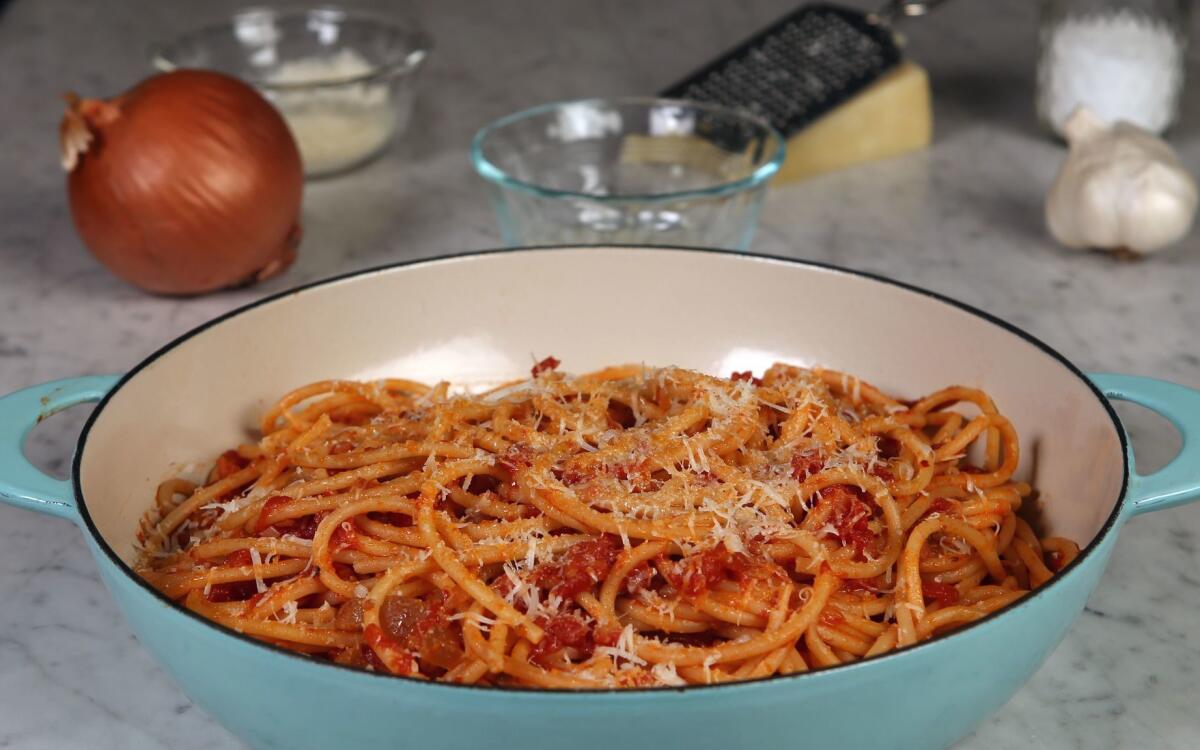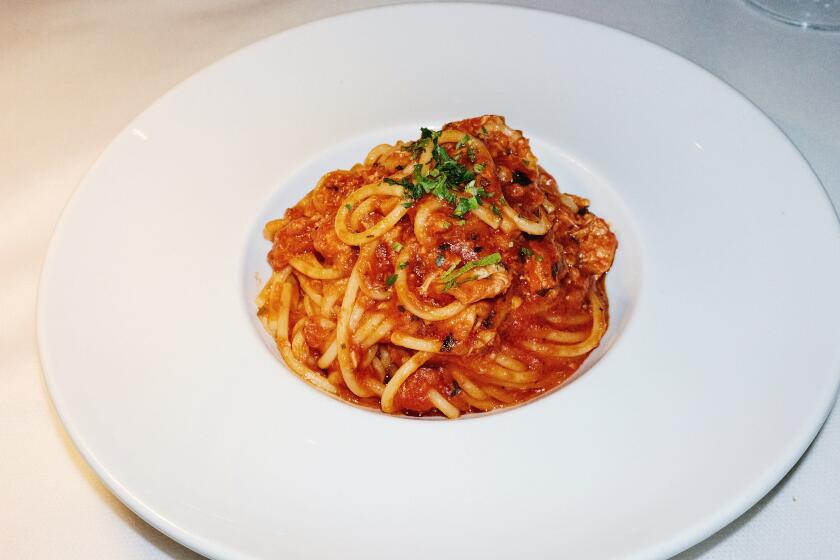Pasta All' Amatriciana

What I love about Amatriciana is its high ratio of happy-eating-satisfaction to prep time. It is a simple-to-make, tomato-based sauce — seasoned with guanciale, a bit of hot chile pepper and onion — and is just incredibly good.
The sauce is typically served with bucatini, a long noodle slightly thicker than spaghetti and pierced with a hole or “buco.” The thickness of bucatini pretty much guarantees a messy meal, so spaghetti or tortiglioni (smaller diameter rigatoni) is permissible.
Amatriciana is a sauce where the personal is the authentic. Feel free to substitute pancetta for the guanciale, omit the onion, or add garlic, white wine or grated pecorino Romano. As for the tomatoes, this is one of those year-round sauces that tastes odd when made with fresh tomatoes.
From the story: Making pasta all’Amatriciana, the classic Italian pasta dish
Pick a wide skillet to make your sauce so the excess liquid evaporates quickly. This is not one of those leisurely “Sunday” sauces. From start to finish it shouldn’t take you longer than 45 minutes including prep. Add enough olive oil to film the bottom of the pan. Add the guanciale and cook, stirring, over medium heat until the fat is rendered but the batons are not yet crispy. Remove from heat and place the guanciale on a plate, leaving the fat in the skillet.
Add the minced onion and a pinch or two of salt. Cook the onion over medium heat, stirring occasionally, until the onion is softened but not overly colored. Add the chile pepper and saute briefly. If you want to use garlic, add it now, letting it cook for a few seconds before you add the tomatoes.
Add the tomatoes to the pan, crushing them with your fingers as you lift them out of the can. Use all the juice too. Or pour the contents of the can into the skillet and use a potato masher to break up the tomatoes. Add the guanciale to the tomatoes in the pan along with an additional tablespoon or two of olive oil. Bring to a lively simmer and stir frequently, cooking the sauce until it reduces and thickens. Taste for seasoning, adding additional salt and/or chile to taste.
Meanwhile bring a large pot of water to boil. Once it’s boiling, add enough salt to the water to approximate the saltiness of the sea, usually two tablespoons. Bring the water back to the boil and add the pasta stirring frequently in the first few minutes to prevent the pasta from sticking. (Do not add oil to the water.) When the pasta is al dente, drain it or lift it from the water using tongs, and add it to the skillet with your sauce. Let it absorb the sauce over low heat.
Serve immediately with a healthy dusting of grated pecorino Romano.
Get our Cooking newsletter.
Your roundup of inspiring recipes and kitchen tricks.
You may occasionally receive promotional content from the Los Angeles Times.















